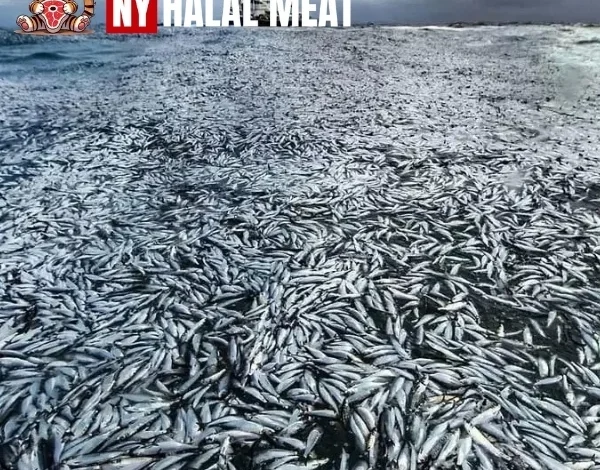
The Impact of Overfishing on U.S. Seafood Supplies
What is Overfishing?
Overfishing occurs when fish or other marine species are caught at a rate faster than they can reproduce, leading to a sharp decline in their population. Without adequate time for recovery, fish stocks can dwindle, disrupting the entire marine ecosystem. This unsustainable practice affects both commercial and recreational fishing industries and often results from high demand, inadequate fishing regulations, and inefficient conservation efforts.
How Overfishing Affects U.S. Seafood Supplies
The U.S. seafood industry is one of the largest in the world, providing billions of dollars to the economy. However, overfishing is beginning to show its adverse effects, threatening both the availability and affordability of seafood. Below are some of the ways overfishing directly impacts seafood supplies in the U.S.:
1. Decline in Fish Populations
One of the most immediate consequences of overfishing is the depletion of fish populations. As species become over-exploited, it becomes increasingly difficult for fishermen to meet consumer demand. Some of the most heavily overfished species in the U.S. include Atlantic cod, bluefin tuna, and various types of shrimp. As these populations continue to decrease, the supply of these seafood products becomes limited, driving prices higher.
2. Economic Impact on the Fishing Industry
Overfishing not only threatens the environment but also endangers the livelihoods of those working in the fishing industry. Thousands of jobs depend on the health of fish stocks, including those of fishermen, seafood processors, and others within the supply chain. As fish stocks dwindle, the costs of fishing increase, and jobs may be lost, causing long-term economic damage to coastal communities and the national economy.
3. Environmental Damage
Beyond the direct impact on fish populations, overfishing also causes significant harm to the broader marine environment. Destructive fishing methods, such as bottom trawling, damage critical habitats like coral reefs and sea floors, which are home to a variety of marine species. The degradation of these habitats can lead to the loss of biodiversity, further disrupting the stability of ocean ecosystems.
4. Loss of Marine Biodiversity
Overfishing contributes to the loss of marine biodiversity by not only depleting target fish species but also harming non-target species through bycatch. Bycatch refers to marine animals such as dolphins, seabirds, and turtles that are unintentionally caught in fishing gear. The loss of these species can have far-reaching effects on marine ecosystems, threatening the delicate balance that supports a wide range of marine life.
Contributing Factors to Overfishing
Overfishing is driven by a variety of factors, many of which are linked to human activities. Understanding these contributing factors is crucial to finding effective solutions:
1. High Consumer Demand
The increasing global demand for seafood, particularly in the U.S., is one of the primary drivers of overfishing. As seafood consumption rises, there is immense pressure on the fishing industry to catch more fish to meet this demand. This growing appetite for seafood, combined with changing dietary habits, has placed a significant strain on fish populations.
2. Weak or Inconsistent Regulations
Despite the existence of laws and regulations designed to protect marine life, enforcement remains inconsistent across regions. In some areas, there are inadequate restrictions on the amount of fish that can be caught, allowing overfishing to persist. Furthermore, illegal, unreported, and unregulated (IUU) fishing continues to undermine conservation efforts, further contributing to the depletion of marine resources.
3. Advancements in Fishing Technology
Technological advancements in fishing gear and methods, such as larger vessels, more effective nets, and sonar devices, have made it easier to catch fish in large quantities. While these technologies increase fishing efficiency, they have also led to overfishing in certain regions. The ability to catch fish at such a rapid pace often comes at the cost of sustainability, as fish populations cannot replenish quickly enough.
Solutions to Combat Overfishing
Addressing overfishing and safeguarding U.S. seafood supplies requires a coordinated effort among governments, industries, and consumers. Here are some solutions to mitigate the impact of overfishing:
1. Stronger Regulations and Enforcement
Governments must take stronger actions to enforce regulations that protect fish populations. This includes imposing stricter catch limits, expanding marine protected areas, and ensuring that fishing practices align with sustainability goals. While the U.S. has made progress in this area with legislation such as the Magnuson-Stevens Fishery Conservation and Management Act, continued efforts are needed to combat overfishing more effectively.
2. Promotion of Sustainable Fishing Practices
Adopting sustainable fishing practices is key to ensuring that fish populations remain viable for future generations. This involves using selective fishing gear that reduces bycatch, implementing seasonal closures to allow species to recover, and promoting aquaculture as a viable alternative to wild-caught fish. These measures can help mitigate the pressure on overexploited fish stocks.
3. Consumer Education and Sustainable Choices
One of the most effective ways to combat overfishing is by raising consumer awareness. Consumers can make a significant impact by choosing sustainably sourced seafood. Certifications such as those offered by the Marine Stewardship Council (MSC) provide assurances that seafood products are harvested responsibly. When consumers prioritize sustainably caught seafood, they help create demand for more eco-friendly fishing practices.
4. International Cooperation
Overfishing is a global problem that requires international collaboration. The U.S. must continue working with other countries and international organizations to tackle overfishing on a global scale. Strengthening global agreements on fisheries management and ensuring better enforcement of international regulations will help protect marine resources worldwide.
Conclusion

Overfishing presents a serious threat to U.S. seafood supplies, with consequences for both the environment and the economy. The decline of fish populations, the economic instability of the fishing industry, and the environmental degradation caused by unsustainable fishing practices must be addressed to ensure the long-term sustainability of seafood resources. By adopting stricter regulations, promoting sustainable fishing practices, and encouraging consumer education, we can protect the future of the U.S. seafood industry and preserve marine ecosystems for generations to come.





